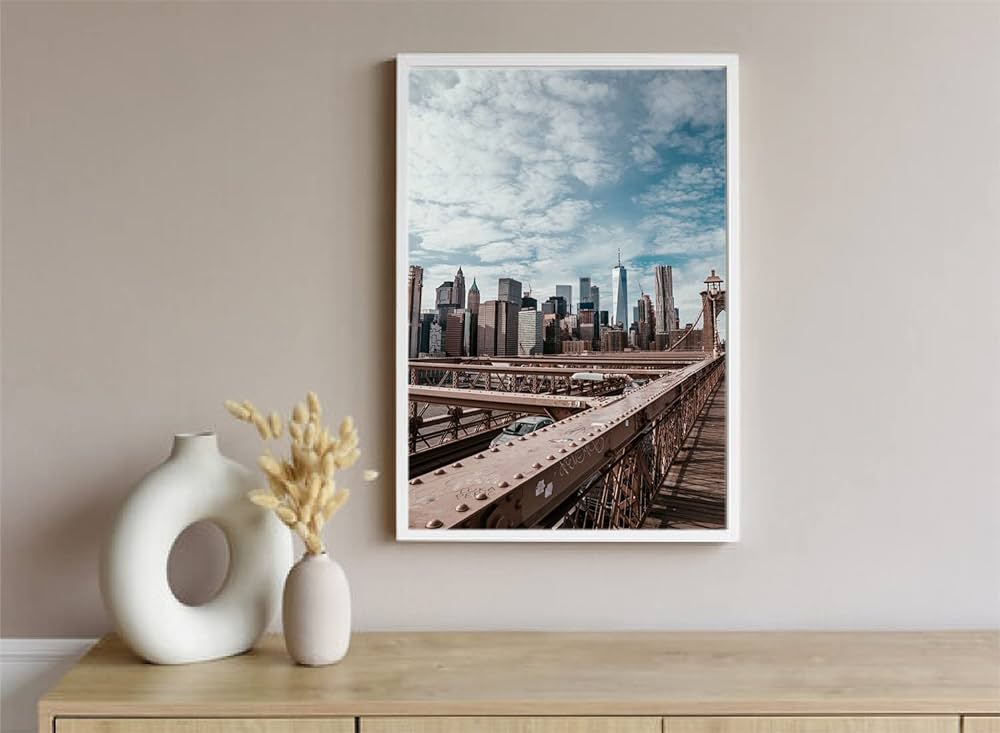
Everything you need to know about painting framing types to elevate your artwork
Framing plays a vital role in enhancing the presentation and protection of paintings, and there are several framing techniques to consider. One of the modern and unique painting framing methods is floater framing. Let’s delve into various painting framing options and explore the characteristics of floater framing. If you want to know in detail about painting framing in Brooklyn, keep reading till the end.
Traditional Framing
Traditional framing is a classic and versatile choice for framing paintings. It typically involves the following elements:
Matting and Mounting: Traditional frames often include a mat, which is a border around the painting. Mats serve several purposes, including enhancing the aesthetics of the artwork and preventing the glass from directly touching the painting’s surface, thus protecting it. The artwork may also be mounted on a backing board to provide support and stability.
Glass or Acrylic: Traditional frames typically feature glass or acrylic to protect the painting from dust, UV rays, and physical damage. The choice between glass and acrylic depends on factors such as weight and UV protection.
Variety of Mouldings: Traditional frames come in a wide range of frame mouldings, available in various styles and materials, including wood, metal, and plastic. These frames are designed to complement the painting’s style and the decor of the room where it will be displayed.
Canvas Stretching
Canvas stretching is a popular framing method for paintings created on canvas. This technique typically involves stretching the canvas over stretcher bars, creating a tight and even surface. Key points to consider include:
Taut Surface: Stretching the canvas creates a taut surface, which is essential for maintaining the painting’s integrity, as it prevents sagging or warping over time.
Frame Options: Stretched canvases can be framed using traditional frames with or without glass, depending on the preferences of the artist or owner.
Shadow Box Framing
Shadow box framing is an ideal choice for three-dimensional or layered artworks. This method allows the artwork to have depth within the frame, creating an intriguing visual effect. Key features of shadow box framing include:
Depth and Space: This framing technique provides extra depth and space within the frame, which is essential for artworks that contain multiple layers, objects, or sculptural elements.
Displaying Objects: It’s particularly suitable for collages, sculptures, and artworks that incorporate objects or materials beyond the two-dimensional plane.
Floater Framing
Floater framing is a contemporary and innovative framing technique that creates a captivating presentation for paintings. Some defining characteristics of Floater framing in Brooklyn or anywhere are as follows:
The Floating Effect: The name “floater framing” is derived from the unique illusion it creates, making the artwork appear to “float” within the frame. Instead of being completely enclosed by the frame, the edges of the painting are left visible, giving the impression of weightlessness.
Transparency: Floater frames involve suspending the artwork between two clear pieces of glass or acrylic. This transparency allows the edges of the painting to be seen, providing a more comprehensive view of the artwork, including the sides.
Sleek Frame Design: The frame itself is typically designed to be minimalistic and unobtrusive, so it doesn’t distract from the artwork. The simplicity of the frame allows the painting to take center stage.
Contemporary Aesthetics: Floater framing is often used for modern and abstract art, as it complements the clean lines and aesthetics of these styles. It’s an excellent choice for artworks that have visually interesting edges, unique textures, or a significant part of the image that extends to the sides of the canvas.
Choosing the right painting framing technique in Brooklyn or any other place involves considering factors such as the painting’s style, your personal preferences, and the environment where it will be displayed. Each framing method has its unique advantages and can significantly impact the way a painting is perceived and appreciated. A professional in this field can guide you towards the best option.



